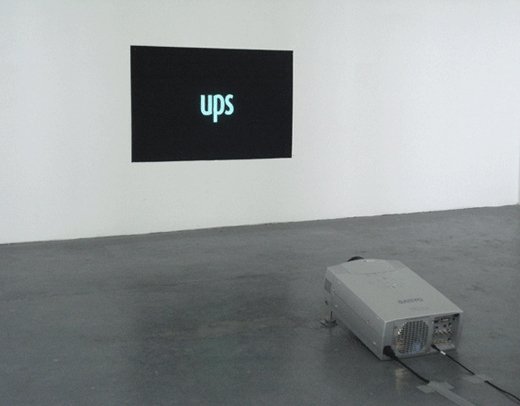Misty Boundaries Fades and Dissolves
dal 24/2/2010 al 27/3/2010
Segnalato da
24/2/2010
Misty Boundaries Fades and Dissolves
FormContent - new space, London
The exhibition gathers together six British artists' work made during or in reference to the 1980s to the present day. They are all composed of cuts, scraps, shreds and remains, playing on their own syntactical nuances and that of the exhibition. The scrap is the raw material of the work, while its composition determines its script, its articulation. At each point of encounter, the material is also a text. Curated by Daniella Saul.

Curated by Daniella Saul
George Barber, Stewart Home, Linder, Clunie Reid, James Richards, Eva Weinmayr
“Misty”, a common drag name; “Misty Boundaries Fades and Dissolves” a name taken from the title of a suite of video works by James Richards that changes occasionally. One title; two acts of dissimulation and oscillation. The Contemporary can be described as having a similar set of shifting boundaries within artistic practice, in terms of both content and method. Trajectories within artistic production that seem no longer to plot their histories through the act of naming, distinguish themselves only as being “of the present.” But what marks a work as contemporary?
The exhibition gathers together six British artists’ work made during or in reference to the 1980s to the present day. They are all composed of cuts, scraps, shreds and remains, playing on their own syntactical nuances and that of the exhibition. The scrap is the raw material of the work, while its composition determines its script, its articulation. At each point of encounter, the material is also a text. The subjective investment in the work lies not only with the viewer, but also with the artist. Which scraps and pieces do compose the work? What is left behind? The encounter and experience of the cut, the shred and the scrap, pasted and layered, simultaneously marks both an avant-garde and a normalizing, everyday experience.
Contemporaneity is taken as an expanded notion, in an attempt to conceptualise a recent history of practice through an idea of layers rather than through periodicity, difference or negativity. The contemporary is not the effect of a subjective desire to put aside history. It is a condition that is manifested through the process of making and at the moment of encounter with the artwork that signals an idea of having a temporal awareness of the present, of being “with time.” They foreground the primacy of the idea of existing in the present, rather than existing in order to define another temporal moment, future or past. The scrap, remain and the found image manifest this primacy unlike any other material. If the Contemporary can be characterised as a “thickening of the present” (Terry Smith, 2008), the scrap and the layer embody the contemporary. If neither the art object, nor witnessing is sacred any longer, the contemporary can also signal a unique instance of the return to a present moment that was not witnessed first-hand.
Image: Eva Weinmayr, Downs, 2009, HD video, 1:00 min, colour, sound, single screen projection, anti-vandalism paint on paper, installation view
Private View 25 February, 6 - 9pm with a screening by Eva Weinmayr at 6.30pm
25th February - 12th March: Linder, Eva Weinmayr, George Barber
12th March - 25th March: Clunie Reid, James Richards, George Barber
25th March - 28 March: Stewart Home, Linder, Clunie Reid, Eva Weinmayr, James Richards
Finissage: 25 March, 6 - 9pm with a performance by Stewart Home
FormContent project space
51–63 Ridley Road, London
Open: Friday – Sunday, 12–6p.m. or by appointment
free admission



